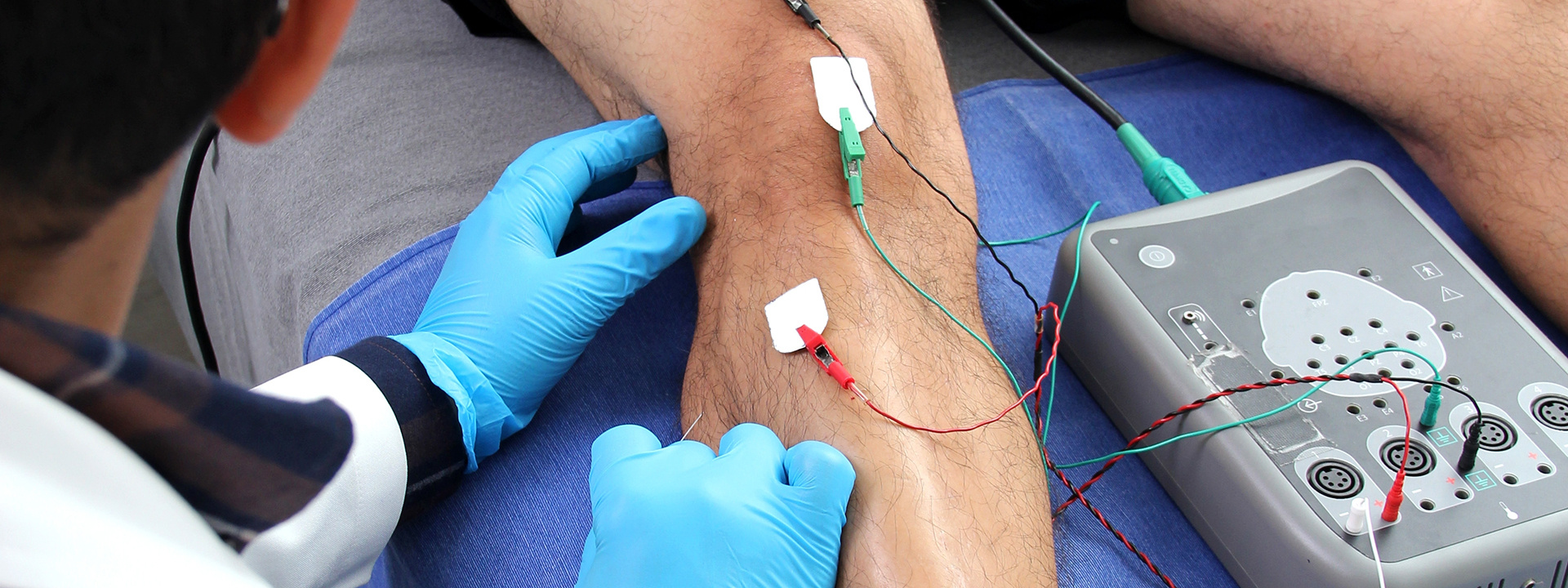
Plantar Pressure Mapping & Surface Electromyography
Plantar pressure mapping with sensorized in-shoe pressure insoles is emerging as one of the most compelling technologies for evaluating movement biomechanics and assessing injury risk in sports.
However, in some circumstances, plantar pressure mapping can be integrated with complementary technologies to enhance the measurement's outcome.
Video analysis, 3D motion capture, force plates and platforms, and electromyography are some of the technologies that can provide enriched datasets for a better understanding of human movement and performance when paired with plantar pressure mapping.
Surface electromyography, often abbreviated as sEMG, is a non-invasive method that measures the electrical activity of muscles and, when paired with plantar pressure mapping, can provide additional information related to human performance and movement.
Combining Plantar Pressure Mapping With Surface Electromyography
Surface electromyography (sEMG) is a tool that allows one to examine the muscle by measuring muscular activity. It supports practitioners working in different areas of human performance, such as sports science, rehabilitation, sports medicine, and ergonomics.
Electrodes placed on the skin over the muscle belly connected with specific bioamplifiers measure electrical muscle activity during muscle contraction and relaxation cycles.
The analysis of a sEMG signal is mainly done at three levels:
- Amplitude
- Temporal
- Spectral (Frequency)
The amplitude of the signal allows practitioners to evaluate the level of muscle activation. In contrast, the temporal analysis is used to understand the activation timing. The spectral analysis, however, is associated with muscle fatigue evaluation.
Combining muscle data with plantar loading, pressure distribution, and temporal statistics obtained with a plantar pressure measurement device, like XSENSOR's Intelligent Insoles, will enhance the evaluation's outcome and increase the quality and effectiveness of treatment and training interventions.
Some of the benefits of using these complementary technologies together are:
- Professionals working both in clinical and on-field settings can get a more holistic understanding of foot function during running or any other sporting activity;
- More precise and detailed understanding of why the foot is loaded in a specific way; and
- Matching load and pressure distribution patterns with muscle activation patterns of the main lower extremity muscles can help identify weaknesses in the kinetic chain.
Assessing fatigue is one of the most exciting applications of sEMG and plantar pressure.
In the sEMG signal, fatigue is shown as an increase in amplitude and a decrease in spectral frequencies. In contrast, in plantar pressure data, fatigue is reflected as increased plantar loading and decreased stride length.
Access to this data is fundamental to recognizing which muscles are fatiguing first and how they affect plantar pressure distribution and loading mechanics.
Using plantar pressure insoles with sEMG can help sports biomechanists, sports medicine practitioners, strength and conditioning coaches, and rehabilitation specialists identify muscle function and biomechanics efficiency for more precise and detailed neuromuscular profiling.
Tune in to our webinar to learn more about using plantar pressure mapping with sEMG for human movement analysis and injury risk profiling.
